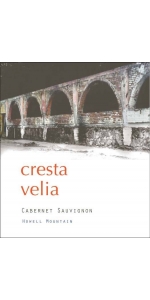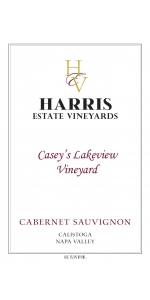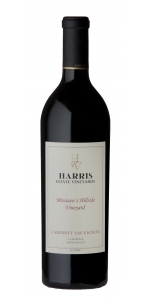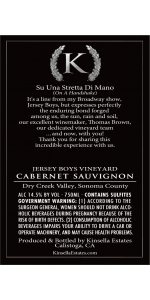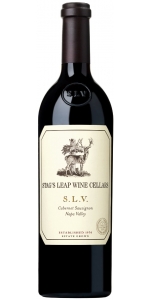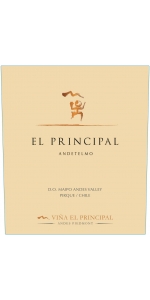Klinker Brick Cabernet Sauvignon 2014
| Country: | United States |
| Regions: | California California (Lodi) |
| Winery: | Klinker Brick Winery |
| Grape Type: | Cabernet Sauvignon |
| Vintage: | 2014 |
| Bottle Size: | 750 ml |
Early to bud and early to ripen, the 2014 vintage was our third drought year in a row. Dry, even temperatures marched the grapes along at a steady clip all year and created a wine with beautifully integrated fruit, acidity, and tannin.
Dense and dark magenta in color, this is a lithe and energetic vintage with lifted aromatics and a purity of fruit that lights up the medium-bodied tannin structure. The nose promises fresh black fruits, cherries and a touch of graphite, and the palate completely delivers. Juicy blackberry, plum, and bright cherry explode in the mouth, and develop into savory notes of baked black fruit and fresh pencil shavings on the mid-palate.
Eagle Summit Vineyard’s signature eucalyptus appears on the back palate to brighten the fruit, showing fragrant peppermint and warm, toasty spices through the finish. Whether you open it young or wait a few decades, this vintage does Howell Mountain proud--sophisticated and smart, with a rustic wild side.
Cresta Velia Cabernet Sauvignon Howell Mountain is made from 100 percent Cabernet Sauvignon.
Aged in 100% French oak (86% new)
• 100% Cabernet Sauvignon from Eagle Summit Vineyard on Howell Mountain
• Equal amounts of clone 4 and clone 7
• unfined and unfiltered
Review:
"The 2014 Cabernet Sauvignon is 100% Cabernet aged 20 months in 86% new French oak, with the typical suspects in terms of cooperage – Darnajou, Taransaud, and Remond. This opaque purple-colored wine has plenty of mulberry and blackcurrant fruit along with hints of blackberries, camphor and incense. The are some notes of unsmoked cigar and licorice as well. Ripe, medium to full-bodied and luscious, it is a classic to drink over the next 15 or more years. - RP"
- Robert Parker's Wine Advocate (Issue #228, December 2016), 90 pts
The Cabernet Sauvignon Casey’s Lakeview is similarly inky bluish/purple to the rim. Tasting like blood, this wine is dense and rich with lots of chocolate, espresso, earth and spice. It is deep, full-bodied, and again, a masculine style of wine that needs at least 4-5 years of cellaring and should keep for 25 or more years.
Lakeview Vineyard is the winery’s mid-block vineyard planted to a combination of clone 6 & 337 Cabernet Sauvignon on 101-14 rootstock. Excellent drainage from the rocky and chalky soils plus plenty of sunlight throughout the day produces wines of bold character with mouth filling flavors.
Organic farming methods are used to produce this Cabernet Sauvignon Casey's Lakeview vineyard. Vines are 17 years old. Ageing in French oak barrels (85% new) for 20 months, then 12 months in bottle prior to release. Non-filtered.
Review:
"The 2014 Cabernet Sauvignon Casey's Lakeview Vineyard is the most overt of these wines. Superripe black cherry, plum, chocolate and licorice add to an impression of flamboyance that sits on the edge of being too much. The effects of the drought are felt in the wine's slightly roasted profile. - Antonio Galloni"
- Antonio Galloni's Vinous (December 2016), 91 pts
Heritage School Missiaens Hillside Cabernet Sauvignon is made from 100 percent Cabernet Sauvignon.
A steep, rocky site with red volcanic soils results in our most structured and concentrated wine. Planted in 1998 using 110R rootstock and clone 337 Cabernet Sauvignon our Hillside Vineyard produces wines as breathtaking as the views from its slopes. These tiny, dark blue berries ripen near the end of September thanks to cool afternoon temperatures allowing for increased hang time and developed flavors.
Reviews:
"The 2014 Cabernet Sauvignon Missiaen's Hillside Vineyard is the darkest and richest of these wines, but it also has enough structural breadth to handle all of that intensity. Superripe plum, bittersweet chocolate, tobacco and licorice all flesh out over time. This is an especially rich, seamless style, yet all the elements are in the right place. - Antonio Galloni"
- Antonio Galloni's Vinous (December 2016), 92 pts
Pure 100% cabernet Sauvignon, this vineyard continually astonishes. Loads of loamy soil notes followed by blue and black fruits give this cabernet massive depth and beautiful integrated tannins. Milk chocolate, crème de cassis and tobacco give this massive wine the depth you come to expect with Napa cabs, but it is all Sonoma County, all from our magnificent little private valley which sees sun all day! We buy no fruit; we sell no fruit.
Jersey Boys Vineyard (Kevin Kinsella is the largest individual investor in the hit Broadway show "Jersey Boys")
Jersey Boys is a six-acre vineyard that was replanted in 2008 with four different clones of Cabernet Sauvignon, handpicked by winemaker Thomas Rivers Brown.
“While it was the third consecutive year marked by limited rainfall, the 2014 vintage offered a perfectly temperate growing season characterized by long, moderate days and cool, clear nights. We began the year with warm spring conditions that gave way to an early budbreak and the consistent, dry weather afforded an optimal fruit set of small berries with incredible concentration. Crop yields were down a bit from 2013, but the quality was magnificent. It was a textbook growing season, every winemaker’s dream.”
- Winemaker Thomas Rivers Brown
Any vegetable or meat in the grill. Delicious with Chocolate as well.
Review:
"There are 645 cases of the 100% Cabernet Sauvignon 2014 Cabernet Sauvignon Jersey Boys Vineyard (named after the fact that the Broadway Musical “Jersey Boys” was brought to the stage and screen by the owner of Kinsella). This wine and its siblings will do a lot to establish Dry Creek as more than another viticulture area better known for Zinfandel than Cabernet Sauvignon. This is a killer Cabernet Sauvignon with dazzling fruit levels and loads of loamy soil notes intermixed with black raspberry, blueberry and blackcurrant. The superripe and pure fruit hits the palate with a full-bodied crescendo. The wine offers up notes of underbrush, unsmoked cigar tobacco, pen ink and plenty of crème de cassis and blackberry, Drink it over the next 20-25 years. - RP"
- Robert Parker's Wine Advocate (Issue #227, October 2016), 95 pts
Stags Leap Wine Cellars S.L.V. Cabernet Sauvignon is made from 100% Cabernet Sauvignon.
Stag’s Leap Wine Cellars stunned the world in 1976 when its 1973 S.L.V. Cabernet Sauvignon bested some of Bordeaux’s first-growth wines in a tasting in Paris. It was the winery’s first commercial vintage, a wine produced from young, three-year-old vines. While the “victory” over the French in “The Judgment of Paris” continues to be hailed throughout the world – and the winery is still humbled by the achievement – Stag’s Leap Wine Cellars enters its golden anniversary year with a commitment to producing more complex and age-worthy wines. No resting on laurels, no autopilot, no complacency, but rather a drive to ensure the next 50 years are even more glorious than the first 50.A step back in time puts Stag’s Leap Wine Cellars’ current and future plans in perspective.
The estate was founded in 1970 with the purchase of orchard land in what is now the Stags Leap District AVA in southeastern Napa Valley. Cabernet Sauvignon and Merlot grapes replaced the prunes and walnuts, and the winery was built in 1972. A wine was made there in that year, but it was the 1973 S.L.V. Cabernet Sauvignon that impressed – and shocked – a panel of experts on French wine. In the 1976 Paris Tasting, a blind tasting, they chose S.L.V as the finest red wine in the group, without knowing its provenance. The outcome brought international recognition to the infant Stag’s Leap Wine Cellars, the nascent Napa Valley wine region, and the entire American wine industry and put all on a path to worldwide renown.
S.L.V. Vineyard S.L.V. soils are predominantly volcanic in nature and contribute multilayered structure, concentration and spicy intensity, often referred to as the “fire-like” elements. S.L.V., also known as Stag’s Leap Vineyards, is the winery’s first vineyard. Planted in 1970, this vineyard achieved international fame when three-year old vines from the 1973 harvest produced a Napa Valley wine that triumphed over some of France’s greatest Bordeaux in a blind tasting among French wine experts in Paris. This history-making Stags Leap District vineyard continues to produce wines with complex black fruit and berry character, spicy intensity, excellent structure and complexity, promising long life and ageability. Today, the property encompasses roughly 35 acres of Cabernet Sauvignon and 1.5 acres of Cabernet Franc. The vineyard soil is volcanic and alluvial with good drainage, and benefits from warm afternoons and cool evening breezes.
Review:
All from the estate S.L.V. Vineyard in Stages Leap and aged 21 months in 90% new French oak, the 2014 Cabernet Sauvignon S.L.V. sports a deep purple/ruby color to go with a Saint-Julien like notes of blackcurrants, damp earth, tobacco and lead pencil. With medium to full-bodied richness, ripe, sweet tannin, beautiful purity and a great finish, it’s another terrific wine from this estate that can be drunk today of cellared for 15+ years.
-Jeb Dunnuck 95 Points
Principal El Principal Cabernet Sauvignon is a blend of 90% Cabernet Sauvignon, 7% Petit Verdot and 3% Syrah originating from old, ungrafted vines. Deep, intense ruby red, black fruit and cassis aromas, well-integrated woody notes, great structure and balance. Ripe and present tannins, elegant and sophisticated in the mouth, a pure expression of the terroir.
Denomination of Origin: Maipo Andes Valley
Vineyard altitude: 800 meters above sea level
Soil: Alluvial origin, Clay loam.
Climate: Sub humid Mediterranean with big influence of the Andes Mountains.
Thermal oscillation: Between 18º and 22ºC.
Viticulture system: Espalier
Pruning: Double Guyot
Yield 4.500 kg/ha
Cool maceration (8°C): 6 days.
Alcoholic fermentation: 6 days.
Post fermentative maceration: 16 days.
Barrel aging: 20 months, new French oak
Bottling: February 2016
Bottle aging: Minimum 2 year in the bottle before release to the market.
pH: 3.46
Total Acidity: 5.9 g/L
RS: 2 g/L
Reviews:
- Descorchados (November 2017), 95 pts
"This complex cuvée of mostly Cabernet Sauvignon with 7% Petit Verdot and 3% Syrah from some of the highest vineyards in Pirque is built to age in bottle. Aged in 75) new wood, it’s serious, concentrated yet beautifully balanced, with very fine tannins, some aromatic mocha oak, layers of dark fruit and a backbone of acidity. 2022-30"
- Tim Atkin (Chile 2018 Special Report), 94 pts
Sixteen months on French oak encouraged extraordinary dry and complex structure layered with aromas of blackberry, cassis and clove. Flavors of cherry, currant, leather and a hint of black tea couple well with the traditional and pronounced French oak.
Pairs great with lamb and cheese.
The Klinker Brick Winery Estate
Steve and Lori Felten, fifth generation grape growers in the Lodi region, continue the tradition of cultivating “Old Vine” Zinfandel vineyards that their ancestors planted in the early 1900’s.
With roots in Germany, Russia and later the Dakotas, the family settled in Lodi, first producing watermelons. Recognizing that the soil and climate were ideal for growing grapes, they began to plant varieties that included Zinfandel, Tokay, Carignane, and Alicante. For over one hundred years, the family has cultivated the land with the aim of producing top quality fruit. Zinfandel was one of the first grape varieties to be planted in the Lodi appellation, although it had also been established in other parts of the California.
In 1996, the family began to produce Zinfandel for the bulk wine market, selling wine to a number of prestigious, benchmark producers of Zinfandel in Napa and Sonoma Counties.
In 2000, Steve and Lori made the decision to start their own winery with the mission to produce exceptional Zinfandel. They continue to make wine from all of the vineyard blocks, culling only the very best lots for bottling Klinker Brick and designated vineyard wines. They produced their first Syrah in 2001. They have one goal…to produce world-class wine.
Klinker Bricks are highly prized bricks that grace many of the historical buildings in Lodi, including the owner's home. Chosen by Craftsmen architects in the 1920’s for their distinctive qualities, including unique shapes and dark, rich color, these bricks are “heavier” than regular bricks
“Klinker” refers to the sound that they would make when banged together, because of their increased weight. Rich, deep color, enormous density, unique and distinctive are the same qualities found in their old vine Zinfandel.
The Klinker Brick Winery Vineyard
The Felten Family own and manage fifteen individual vineyard blocks of “Old Vine” Zinfandel that range in age from 35 to 110 years old. Each vineyard is planted in sandy loam soils along the Lodi Mokelumne River Region and up into the Clements Foothills.
These vineyards are generally head-trained and dry farmed, yielding an average of 2.0 to 3.5 ton per acre. Some of the oldest vineyards have yields as small as .25 ton per acre. While there are significant limitations in the quantity of grapes produced, the quality of fruit is exceptional.
The grapes come from several different vineyards within the Lodi Appellation, depending upon the highest quality of fruit produced each year, and has included several vineyards in the Mokelumne and in the Clements Hills region.
From time to time, they produce single vineyard designated wines that express unique character, in addition to exceptional quality. These wines are produced in very small quantities and are extremely limited.
- back
Kershaw Chardonnay Deconstructed Lake District Bokkeveld Shale CY95 is made from 100 percent Chardonnay.
The inspiration for this Chardonnay stems from my belief that the Elgin region has both a signature grape as well as particular terroirs within its demarcated boundary that reflect regional credentials. This Chardonnay was selected from a sub-region of Elgin from a specific vineyard and an individual clone.
Tasting Notes: Sourced from a parcel in the Western part of Elgin the 95 clone is known for its excellent quality creating wines that are aromatic, fuller bodied and rich yet tightly structured, well–balanced with length of flavor, managing to show restraint and mouth-watering passivity with a great line through the palate and fruit veering towards white peach flesh and nectarine. On Bokkeveld Shales it brings amplified perfume on the nose and persistence and elegance to the palate.
Winemaking:
Grapes were hand-picked in the early autumnal mornings, placed into small lug baskets and tipped directly into a press before being gently whole-bunch pressed up to a maximum of 0.6 bar or until a low juice recovery of 580 liters per ton was obtained. The juice gravity-flowed directly to barrel (no pumps were used at all) without settling. The unclarified juice had no enzymes or yeast added to it and therefore underwent spontaneous fermentation until dry, with malolactic discouraged. The wine rested in barrel for 4 months prior to judicious sulfuring and a further 7 months’ maturation in barrel before racking and bottling.
Review:
"Minerals and a hint of flint on the nose. The expressive minerality of this wine also shows on the palate with complementary light stone fruit notes. Aged in 50% new 228L oak aging for 11 months."
- International Wine Review (Richard Kershaw Lifts Elgin To New Heights, February 2019), 95 pts
Siegel Naranjo Orange Wine Viognier is made from 100% Viognier.
This wine has a nice gold color with some pink hues. On the nose, it shows some sweet notes of spices, dry nuts, white flowers, as well as some light notes of huesillo (dry peaches). In the mouth it shows a beautiful acidity, with a nice mouthfeel and structure and a good length to the finish.
Pair with rich fish and meat dishes, cheeses, appetizer and dessert
Review:



